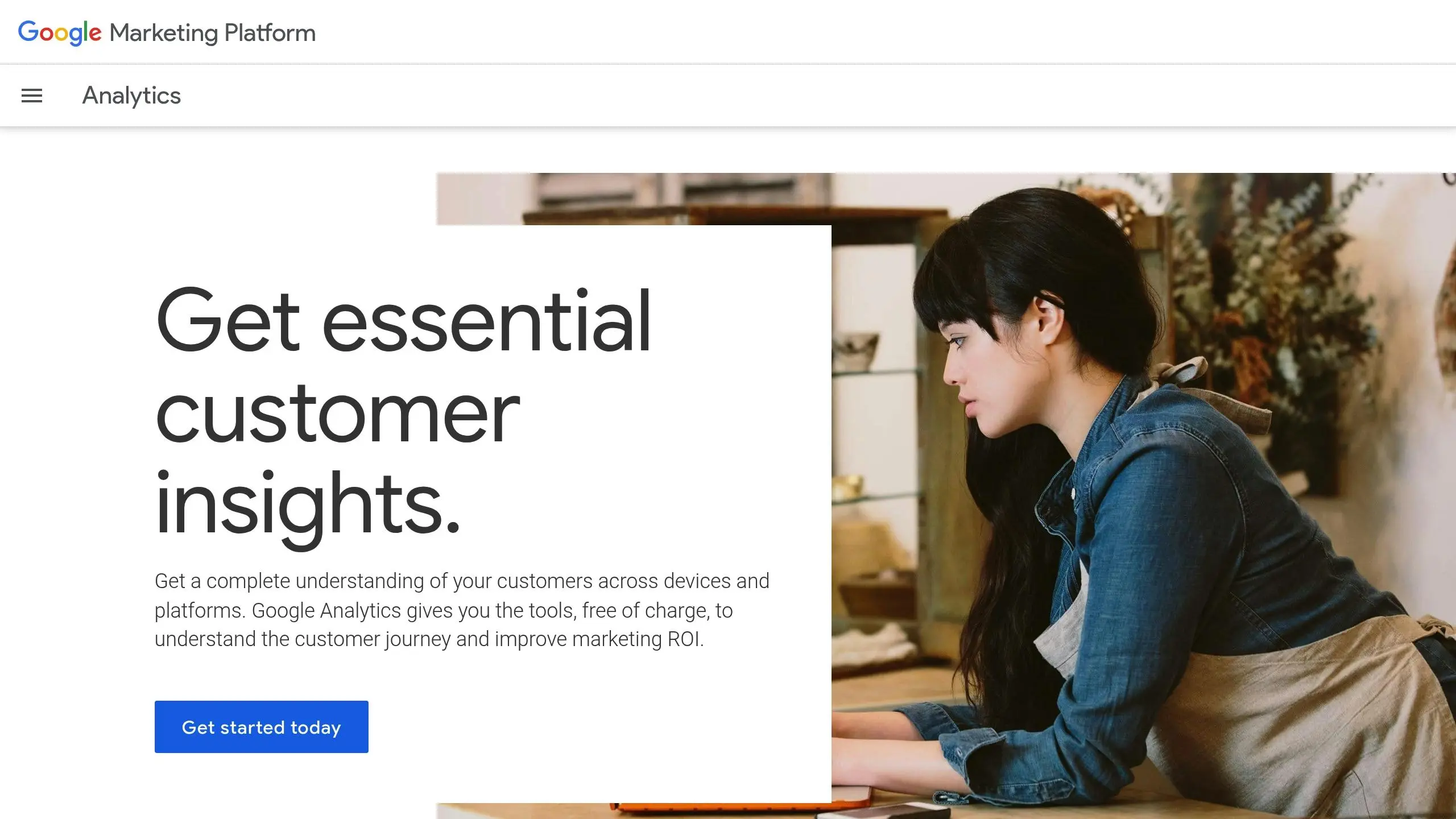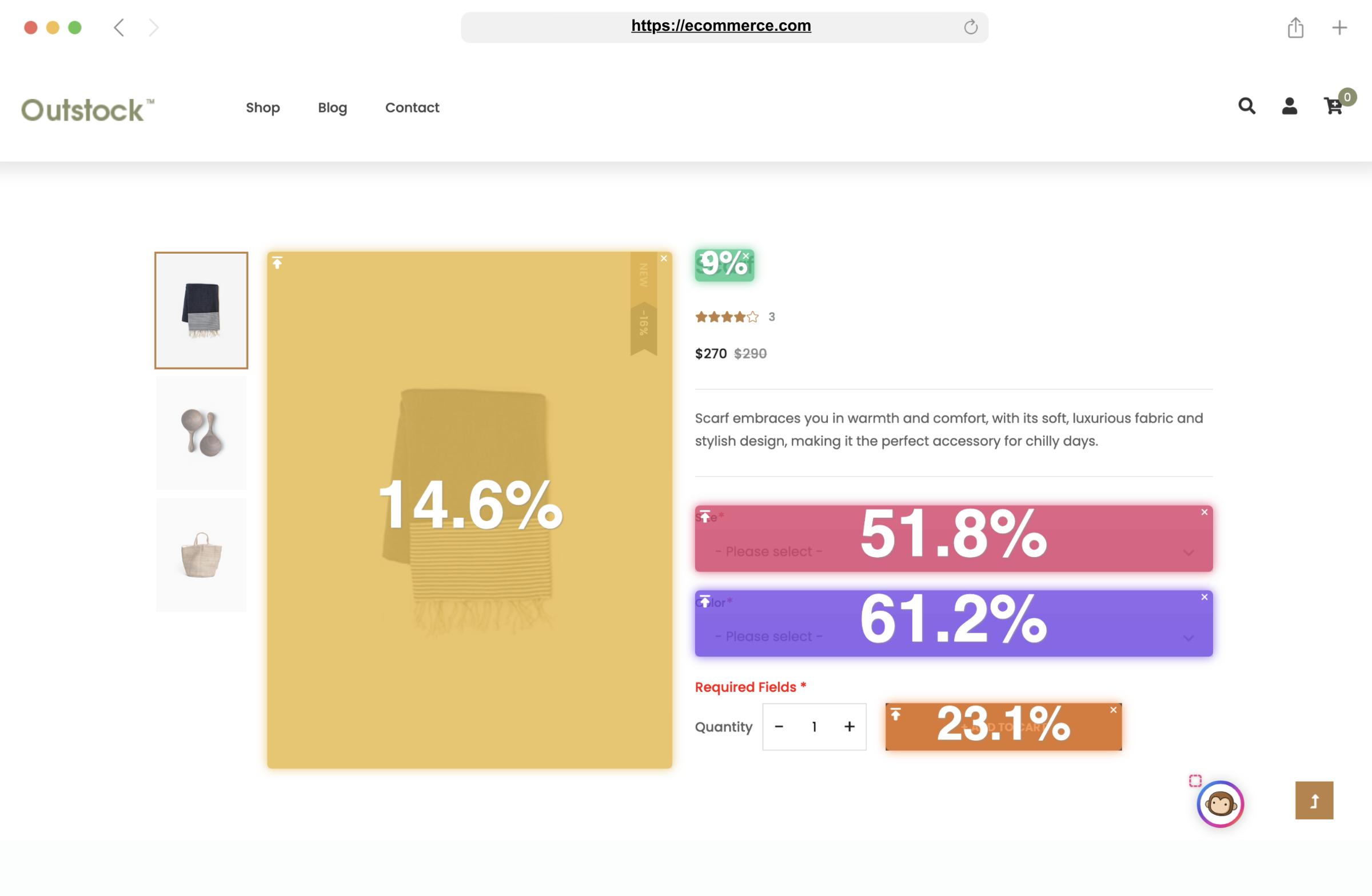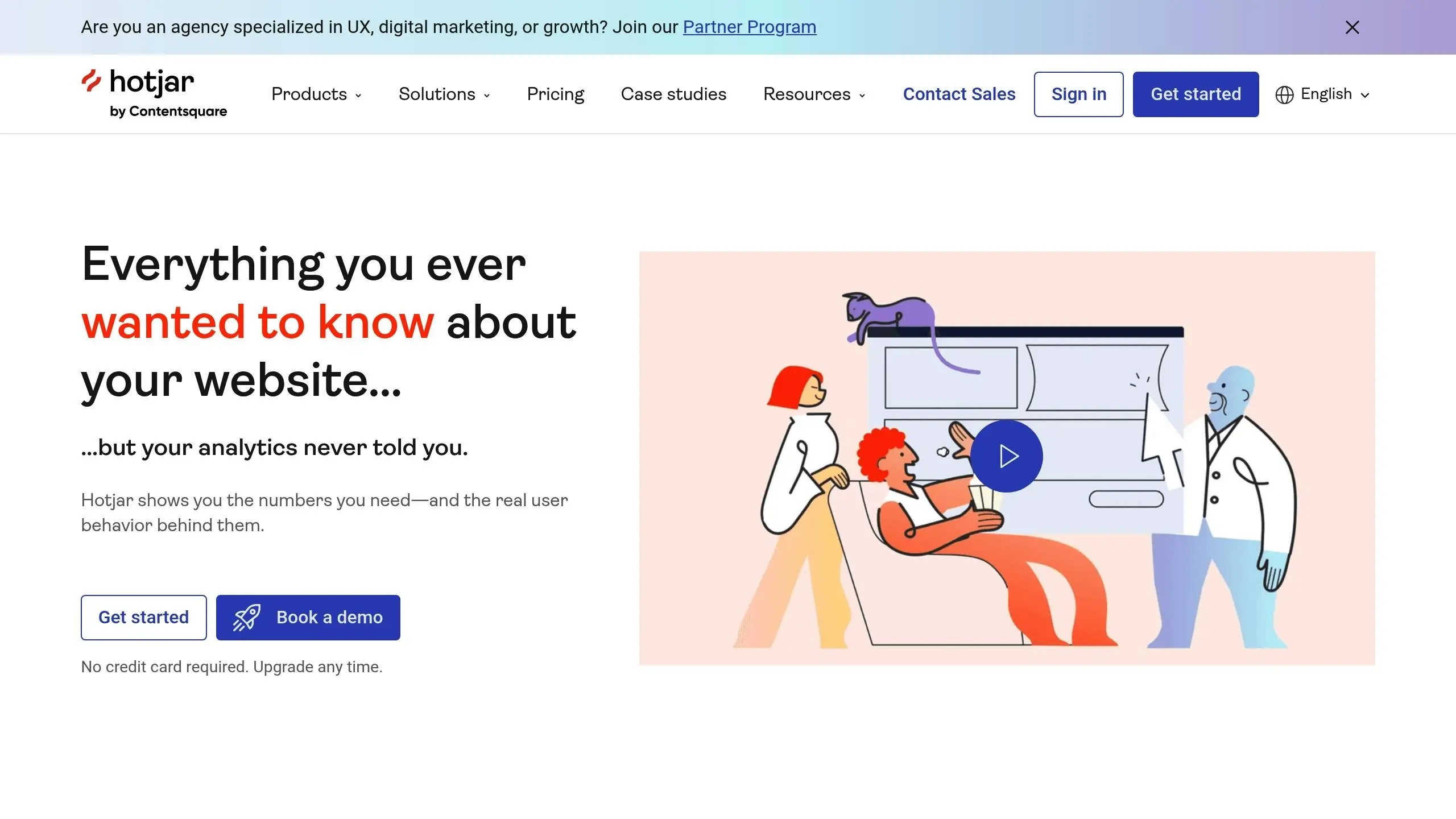Create a Data-Driven CRO Strategy With No-code Tools
Want to boost website conversions without writing code? Here’s how you can use data and no-code tools to build a Conversion Rate Optimization (CRO) strategy.
With a CRO strategy, you can :
-
Leverage Data: Analyze user behavior to make informed decisions instead of guessing. Examples include BluTV increasing mobile conversions by 42% and ADT boosting conversions by 60% by tweaking their call-to-action.
-
Use No-Code Tools: Tools like Google Analytics, Air360 and Hotjar let you track metrics, analyze user behavior, and test changes very easily - no coding required.
-
Track Key Metrics: Focus on metrics like conversion rate, bounce rate, click-through rate, and session duration to identify areas for improvement.
-
Test & Optimize: Use A/B testing platforms like Optimizely and VWO to test variations and refine your site based on data insights.
-
Grow Incrementally: Start with high-impact pages, then expand optimization efforts site wide.
Quick Comparison of No-Code CRO Tools
| Tool | Purpose | Key Features |
|---|---|---|
| Google Analytics | Website analytics | Tracks goals, advanced enterprise features |
| Air360 | User behavior analysis | Heatmap, session recordings, user journey, funnels |
| Hotjar | User behavior analysis | Heatmap, session recordings, feedback |
| Optimizely | A/B testing | AI-powered testing, enterprise-ready |
With the right tools and strategies, you can improve your website’s performance and increase conversions. And of course, no coding skills are needed!
No-Code tools for a CRO strategy
Turn your data into actionable insights with these no-code tools. Here's a breakdown of the top options.
Website Analytics Tools: Google Analytics and Air360

Google Analytics 4 (GA4) is a go-to for free website tracking. For larger businesses, Google Analytics 360 offers advanced capabilities at around $150,000 per year. Key benefits include:
-
Faster data updates (within 1 hour vs. 4–8 hours in the free version)
-
Higher data retention limits
-
Reduced data sampling for better accuracy
-
Priority support with formal SLAs [2]

Air360 complements GA4 with features tailored for conversion rate optimization (CRO). It includes auto-tracking, cookie-less analytics, retroactive data analysis, and detailed user journey insights. You can analyze the performance of the page from macro to micro - all without requiring complex tagging setups.
Next, dive into tools that reveal user behavior.
User Behavior Tools: Air360 and Hotjar

Along with Hotjar, Air360 can also come in handy to understand how users interact with your site as well. Here's a quick comparison:
| Feature | Air360 | Hotjar |
|---|---|---|
| Heatmap | Click rates, conversion rates, rage clicks, engagements | Move maps, rage clicks, engagement zones |
| Session Recordings | Available. Capable of catching 100% for specific page | Available |
| User Research | Not available | Feedback widgets, interview tools |
| A/B Testing | Third-party integrations | Third-party integration |
Testing Platforms: Optimizely and VWO
When it comes to testing, Optimizely and VWO stand out as powerful no-code platforms.
VWO highlights:
-
Starting price of $314/month
-
Built-in heatmap and session recordings
-
A 99% customer satisfaction score
-
Average support response time of 45 minutes [4]
Optimizely offers:
-
AI-powered testing capabilities
-
Support across multiple platforms
-
Advanced statistical models for enterprises
-
Pricing starting at $50,000 annually [5]
Whether you're a small business or a large enterprise, tools like GA4, Hotjar, and VWO can help you optimize effectively. For enterprise-level needs, consider Google Analytics 360 or Optimizely.
Collecting and Understanding User Data
Once your no-code tools are in place, it's time to gather user data that can help you fine-tune your CRO strategy.
1. Setting Up Analytics and Heatmap
Use GA4 to track key conversion goals like newsletter signups, product page views, add-to-carts, checkout completions, and form submissions. Make sure you have enough pageviews for reliable data, and segment by device type to understand how user behavior differs across platforms.
2. Getting Direct User Feedback
Real-time feedback can be a game-changer. Use on-page surveys or feedback widgets to learn directly from users Hotjar offers this . For example, ask new visitors on your homepage what they’re looking for, or find out from product page visitors what might be holding them back from making a purchase. Trigger these surveys strategically - like on exit intent or after users spend a few moments engaging with the page.
"We discovered a few issues which only required 5 minutes to be resolved. This quick fix boosted our conversion by 40%." - Shiv Sharma, Head of Content at Taskworld [6]
3. Finding Funnel Problems
Air360’s auto-tracking capabilities make it easier to analyze your funnel. Identify the most valuable entry points and pinpoint where users are dropping off - especially important since the average cart abandonment rate is 69% [1]. Session replays can highlight issues like navigation problems, slow-loading sections, missing trust signals, or unclear pricing. Comparing journeys of users who convert versus those who don’t can reveal actionable insights. For instance, BluTV achieved a 42% increase in mobile conversions by removing distractions [1].
4. Learn your user behavior with Heatmap
Now that you know where your users dropped off, or where users are frustrated, you can use the heatmap to understand actual user behavior on the website itself. A heatmap will help you transform your user data into actionable test ideas. This step bridges the gap between analysis and implementation.
For example, Materials Market noticed through scroll maps that mobile users couldn't see their main call-to-action (CTA) above the fold. By repositioning and redesigning the CTA, they boosted their conversion rate by 1.1%, adding over $12,000 in yearly revenue [7].
When reviewing heatmap data, pay attention to:
-
Unusual click patterns
-
Sections with rage clicks
-
Overly focused elements
-
CTAs that aren't performing well
These insights give you the data you need to confidently test site changes without writing a single line of code.
sbb-itb-b173e63
Testing Website Changes
Now that you know where needs optimization on your website, it’s time to set up and start testing website change to confirm if it will bring conversion rate optimization.
1. Setting Up No-Code Tests
No-code testing tools like Optimizely and VWO make launching A/B tests straightforward.
-
Define Clear Goals
Focus on one metric per test, such as increasing add-to-cart clicks or reducing form abandonment. -
Create Test Variations
Experiment with changes like moving buttons, tweaking headlines, rearranging elements, or adjusting content. -
Set Up Proper Tracking
Ensure you track both primary and secondary metrics to capture the full impact of your test.
"The concept of A/B testing is simple: show different variations of your website to different people and measure which variation is the most effective at turning them into customers." - Dan Siroker and Pete Koomen [8]
2. Using Test Results
Turum-burum helped Intertop improve their conversion rate by 55% by fixing issues with product filters [7].
When evaluating test results, keep these factors in mind:
-
Aim for 90–95% confidence in statistical significance
-
Run tests for at least 7–14 days
-
Ensure you have a large enough sample size
-
Account for external factors that could influence outcomes
Even tests that don't succeed can offer valuable insights. For instance, Bannersnack's UX team used heatmap data to guide A/B tests, leading to a 25% increase in sign-ups through ongoing adjustments [7].
"Analyzing A/B testing results is one of the most important stages of an experiment. But it's also the least talked about." - Shana Pilewski, Senior Director of Marketing, Dynamic Yield [9]
Dive deeper into results by breaking them down by audience segments. This helps you uncover hidden opportunities and make decisions that better serve your most important user groups.
Growing Your CRO strategy and Program
To keep your CRO program moving forward and deliver better results, it's important to approach growth strategically. By using insights from previous tests, you can take the following steps to expand your efforts effectively.
Making Small, Regular Updates
Focus on consistent, data-backed changes to improve performance over time. Here are some tools that can help:
-
Automated tools like Heap: Instantly track all user interactions.
-
Heatmap, session recordings: Spot areas where users encounter difficulties.
-
Analytics platforms: Measure the impact of changes.
A great example is Club Med, which boosted conversion rates by 97% after using Air360's auto-tracking. They also improved their booking process to achieve this impressive result [12].
Expanding Tests to More Pages
Once you've optimized your key pages, it's time to expand testing across your site. Here's a structured approach:
| Testing Phase | Focus Area | Recommended Tools |
|---|---|---|
| Initial | High-traffic landing pages | Microsoft Clarity (free), Hotjar |
| Intermediate | Product/service pages | Crazy Egg, FullStory |
| Advanced | Entire user journey | Omniconvert, VWO |
Key tips for this phase:
-
Start with high-traffic pages to ensure reliable data.
-
Apply successful variations to similar pages.
-
Track both primary metrics (like conversion rates) and secondary effects, such as SEO performance [11].
Conclusion: No-Code CRO Made Simple
A coding-free, data-focused CRO strategy can make a real difference. While the average website conversion rate sits at 2.35%, top performers manage to surpass 5% - showing there’s plenty of room for improvement[14].
No-code tools make CRO accessible to everyone. As Theano Dimitrakis, Director of Analytics at NoGood, puts it:
"AI is turning CRO into a living, learning system - personalizing experiences in real time, predicting what converts, and automating optimization at scale."[13]
